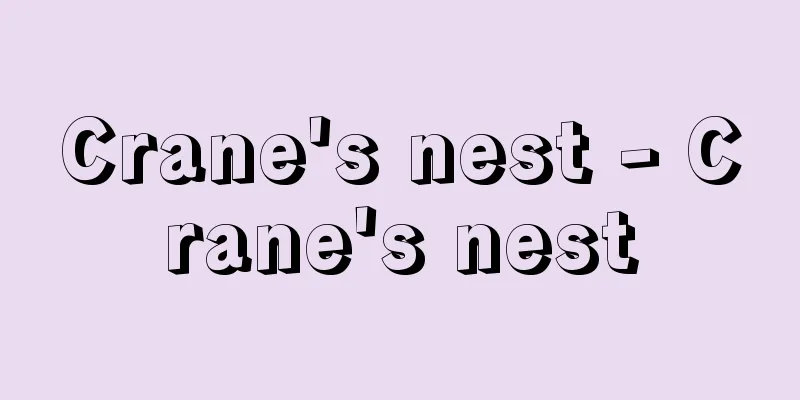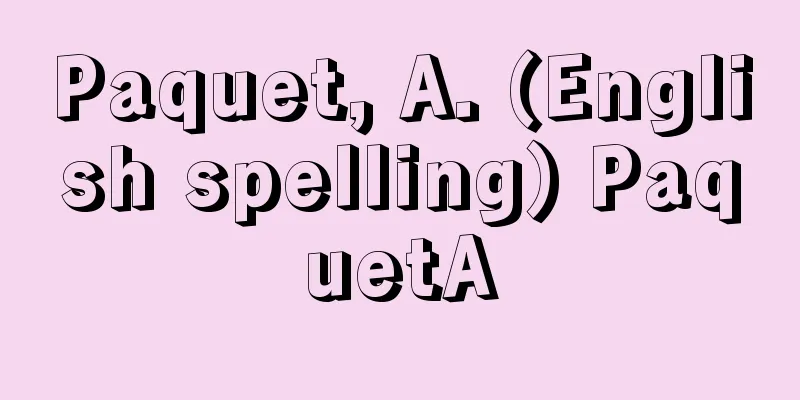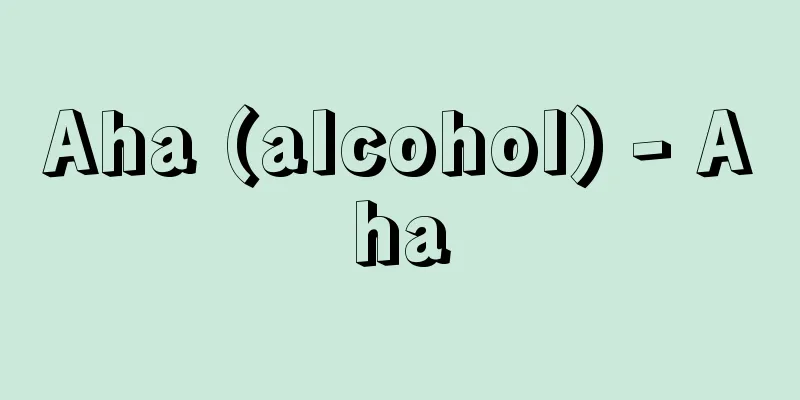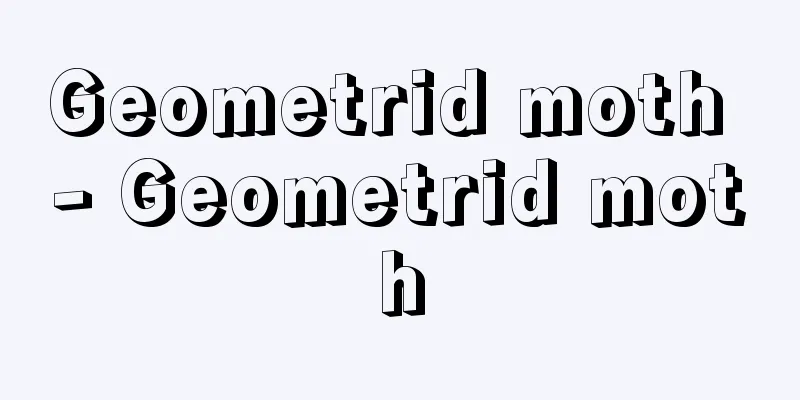Crane's nest - Crane's nest

|
The name of a Japanese piece of music. (1) The name of a classical piece of music for shakuhachi music. The date of composition is unknown. It has been passed down since ancient times to komuso temples all over the country, and there are many different versions of the same name, including the Myoan-ji tradition in Kyoto, the Fudai-ji tradition in Hamamatsu, the Hotei-ken tradition in Oshu, and the Kinko-ryu tradition (official name: Suzuru Reibo). It is an exceptional descriptive piece among Fuke shakuhachi pieces, depicting the love between a parent and child of a crane. It is characterized by a technical technique called tabane. (2) The name of a kokyu piece of music. (a) There is a record in Setsuyo Kikan (1777) of Masashima Kengyo playing Suzugo, and in Sokyu Gaginshu (1811), published by Morioka Masaho, it is referred to as "Suzugo-kyoku" (Suzou-kyoku) or "True Suzugo-kyoku" (Suzou-kyoku). (b) In "Danmono no Sadame" (1808) by Fujii Takanao, a disciple of Motoori Norinaga, it is written that Uden Saki Kengyo performed "Tsuru no Sugoro" in Kyoto, and currently, in Nagoya, Kyoto, Osaka, and other areas, there are some slightly different performances. It is said that it was composed by Udezaki Kengyo, or that it was transferred from the Meianryu shakuhachi piece by Gantoku of Osaka around the Tenpo era (30-44), or that it was composed by Udezaki himself, but there is no definite proof, and the relationship between it and the shakuhachi piece is also unclear. The two-section version may have "Yachiyojishi" or "Sandanjishi" as an introduction, and "Kinutaji" and "Sugoroji" are combined on the sangen. (c) In Edo, there is a piece that has been handed down in the Fujiue school since the Horeki era (1751-64), and the one handed down by Yamamuro Yasuyoshi and Chiyoko is still played by their disciples today. The composition is an introduction, an introduction song, an interlude, a four-part tegoto, and a post-uta song, and the koto piece "Sugoroji" is performed as an ensemble. (3) It is said that there is a jiuta koto piece composed by Kōtō Kūki in 1868 as a sangen tegoto piece, which was further adapted for the koto by Kengyo Komanaka. Source: Encyclopaedia Britannica Concise Encyclopedia About Encyclopaedia Britannica Concise Encyclopedia Information |
|
邦楽の曲名。 (1) 尺八楽の古典本曲の曲名。作曲年代未詳。古くから各地の虚無僧寺に伝えられ,京都の明暗寺伝,浜松の普大寺伝,奥州の布袋軒伝,琴古流伝 (正式名『巣鶴鈴慕』) などをはじめ同名異伝が多い。普化 (ふけ) 尺八曲中例外的な描写曲でつるの親子の愛情を描く。タバネという技巧的手法が特色。 (2) 胡弓の楽曲名。 (a) 『摂陽奇観』 (1777) に政島検校が『巣籠』を演奏した記録があり,これを森岡正甫の文化8 (1811) 年刊『掃弓雅吟集』には「巣籠曲」「真の巣籠曲」などと記されている。 (b) 本居宣長門下の藤井高尚著『弾物のさだめ』 (1808) に,宇伝佐喜検校が京都で『鶴の巣籠』を演奏したとあり,現在名古屋,京都,大阪などでは多少異なる演奏があり,腕崎検校作曲とも,あるいは天保 (30~44) 頃大坂の巌得の明暗流尺八曲からの移曲とも,あるいは自身の作曲とも伝えられるが確証はなく,尺八曲との先後関係も未詳。2段から成るものは『八千代獅子』または『三段獅子』を前奏とすることもあり,三弦で「砧地」「巣籠地」を合せる。 (c) 江戸では宝暦 (1751~64) 以来藤植流に伝承される曲があり,現在も山室保嘉,千代子と伝承されたものがその門弟たちによって演奏されている。前弾き,前唄,合の手,4段構造の手事,後唄という構成で,箏の「巣籠地」を合奏させる。 (3) 地歌箏曲としては,久幾勾当が慶応4 (1868) 年に三弦手事物として作曲したものがあり,これを駒仲検校がさらに箏に移したといわれる。
出典 ブリタニカ国際大百科事典 小項目事典ブリタニカ国際大百科事典 小項目事典について 情報 |
>>: Codonopsis lanceolata (Cranial carrot)
Recommend
Cliff construction - Cliff construction
…Building on a sloping or stepped site, or overha...
Kyohai - Kyohai
〘Noun〙① Haikai with jokes and playfulness as its c...
Madame Bovary
A full-length novel by French novelist Flaubert. ...
Collection of elegant words - Gagenshuran
A collection of examples of archaic language. Wri...
Metallic Bond
The bond between atoms that form metals. Electron...
Suspended business - business suspension
〘 noun 〙 An administrative measure to suspend the ...
Share-cropping (English)
…Therefore, this tenant system is often seen in t...
Liu Huan - Ryusha
544‐610 A Chinese scholar of the Sui Dynasty. His ...
Omiya Imperial Palace
Refers to the residence of the Grand Empress Dowa...
Shimotsuke Yakushiji Temple ruins
Located in Yakushiji, Shimotsuke City, Tochigi Pr...
glottis
...The Adam's apple, which is the entrance to...
Saigawa [town] - Saigawa
A former town in Miyako County, eastern Fukuoka Pr...
Valdemar II
…His foster brother Absalon, who became archbisho...
Approximate solution - Kinjikai
⇒Numerical solution Source: About Shogakukan Digit...
Former Shogunate Succession Document - Kyuubakufuhikitsugisho
…The documents of the Magistrate's Office wer...









